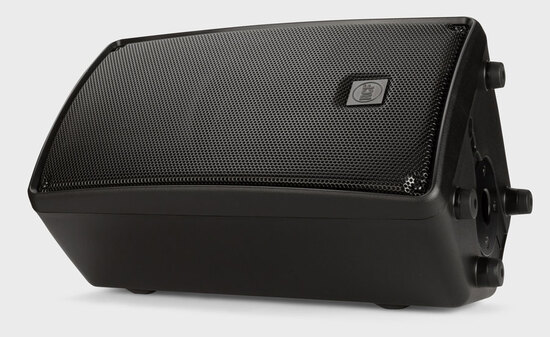Reference Contra Dance Sound System 2025 |
August 12th, 2025 |
| contra, sound, tech |
Many aspects have not changed: mics, stands, and cables are essentially the same gear they were ten years ago. The two places where my recommendations would change, though, are the mixer and speakers.
Last time I recommended an analog 10-xlr Mackie. This was a bit of an unusual choice then, since analog mixers were clearly on the way out. But at the time my argument was that the world hadn't yet sorted out what made a good digital mixer, and a simple analog board was a better fit for one that would be used by a range of people of varying skill levels. I'll be more retrogrouch and say that this still wouldn't be a crazy choice today: something like this 11-xlr Mackie ($570) does everything a regular dance needs, is still easier for a range of people to work on, and is simple and reliable.
But I'll bite the bullet and say that for most dances the 16-xlr Behringer XR18 ($510) is a better choice. It's very widely used so people can transfer their skills between dances, you can mix from anywhere in the hall (including behind the musicians as you ask what they want in their monitors, hearing what they're hearing), and you have many more (perhaps too many for people with insufficient restraint) options to modify the sound (compression, more flexible EQ). You also get many more outputs, for special events where it's worth running more monitors. This is what BIDA got in early 2020 (bad timing) after comparing several options.
Note that you do need a tablet or computer to control the mixer. You can either have sound people bring their own, or buy one as part of the sound system. You should probably also use your own router, since the built-in WiFi is notoriously flaky.
On speakers, last time I recommended two full-range powered speakers (QSC K10s) for mains and three small powered hotspots (srm150s) for monitors. I think this was really the wrong call at the time, and I should have recommended four full-range speakers. While the hotspots are cheaper, and their tighter focus lets you keep stage volumes down, they're really unsatisfying for bands with low-pitched instruments.
Speakers have also changed: there are a lot of good options for full-range powered speakers that are cheaper than the K10 (now K10.2, $900). My favorite is the RCF HD10a ($400): clearer sound than the K10, slightly lower maximum volume (but not a problem for contra), much cheaper, and also lighter. I'd get at least four, two for mains and two for monitors, though getting a third as an extra monitor would be nice for the musicians.
Here's how I see costs changing, in constant July 2025 dollars:
| 2014 system | 2025 system | |
|---|---|---|
| Mixer | $680 | $510 |
| Mains | $2,040 | $800 |
| Monitors | $1,020 | $800 |
| Mics | $544 | $436 |
| Mains Stands | $299 | $240 |
| Monitor Stands | $53 | n/a |
| Mic Stands | $180 | $198 |
| Mic Cables | $90 | $85 |
| Speaker Cables | $75 | $76 |
| Misc | $72 | $30 |
| Total | $5,052 | $3,175 |
Overall it's still a significant investment, at over $3k, but it's 37% cheaper (in real terms) than eleven years ago. This is primarily driven by the switch to the HD10A speakers: if we went with QSC K10.2s it would be back up to $5k.
Comment via: facebook, lesswrong, mastodon, bluesky
